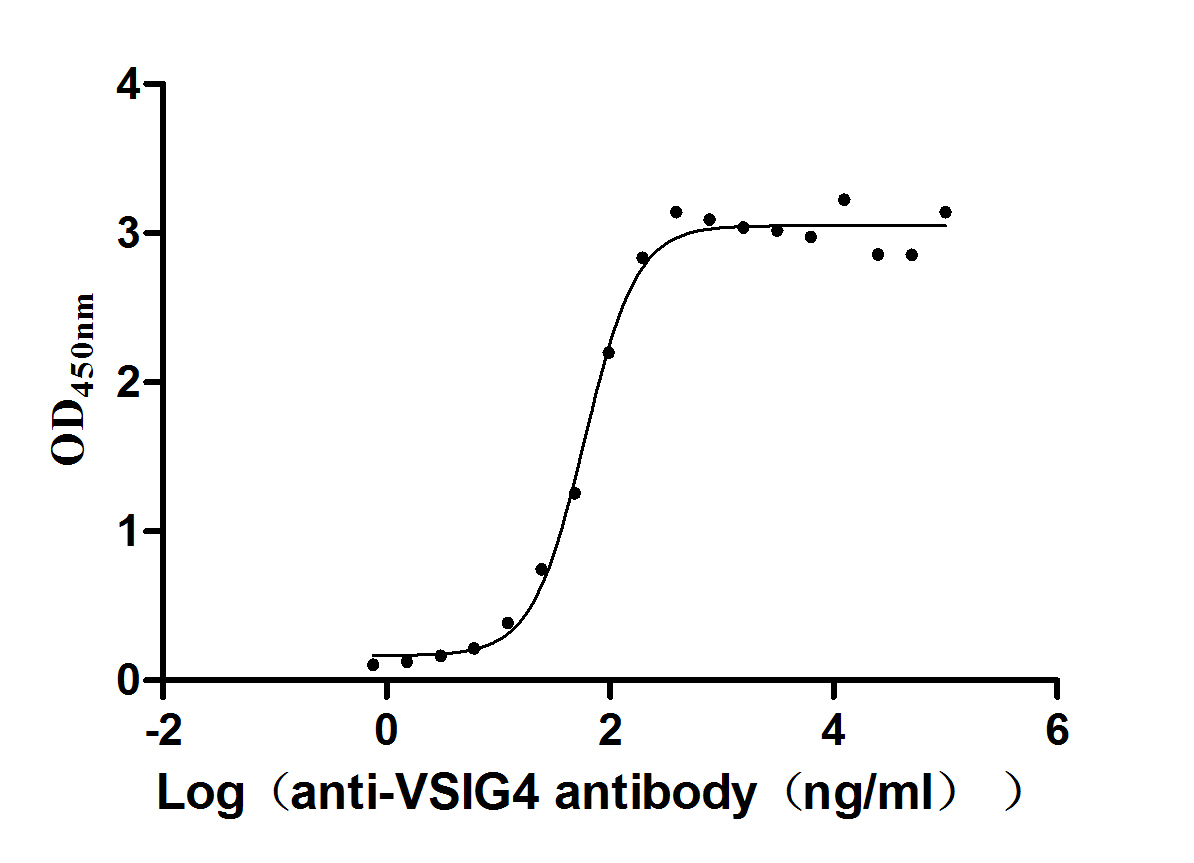The recombinant human VSIG4 protein was used as the immunogen to produce the VSIG4 monoclonal antibody. Obtaining the DNA sequence of the VSIG4 monoclonal antibody by sequencing the cDNA and then cloning the gene into a plasmid vector. The plasmid vector containing the VSIG4 monoclonal antibody gene is transfected into the host cell using a suitable transfection method. The VSIG4 recombinant monoclonal antibody underwent affinity-chromatography purification. It is only reactive with the human species. Its specificity has been tested in ELISA. It can bind to the recombinant human VSIG4 protein (CSB-MP896869HU) with the EC50 of 51.14-68.73 ng/mL.
The VSIG4 protein mainly regulates immune responses by interacting with immune cells such as T cells and macrophages. It is known to act as a co-stimulatory molecule, enhancing T cell activation, and also as an inhibitory molecule, suppressing the function of macrophages. VSIG4 has been shown to play a role in the regulation of autoimmune responses, tumor immunity, and infectious diseases. It is also involved in the clearance of apoptotic cells and the maintenance of tissue homeostasis.






